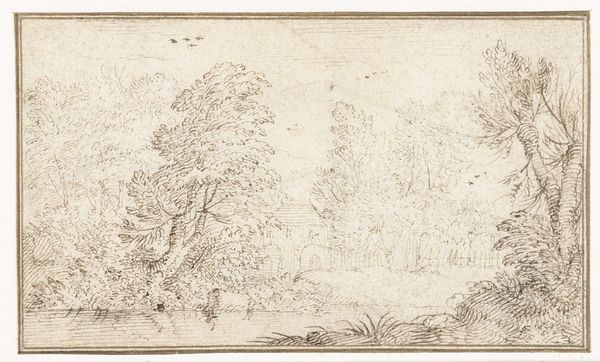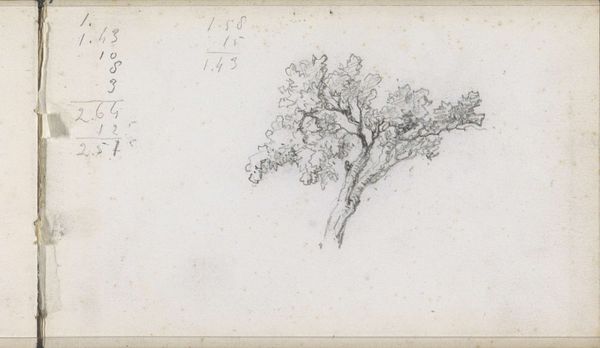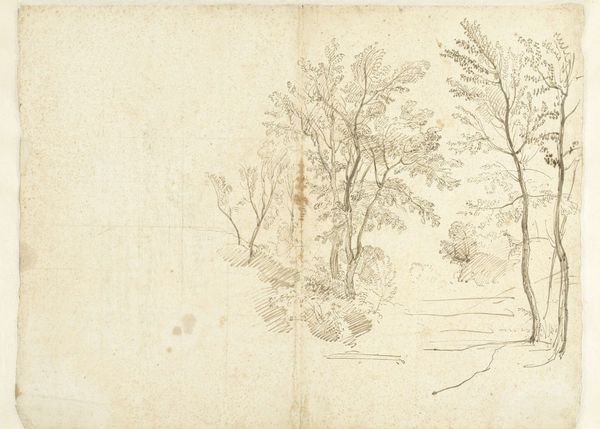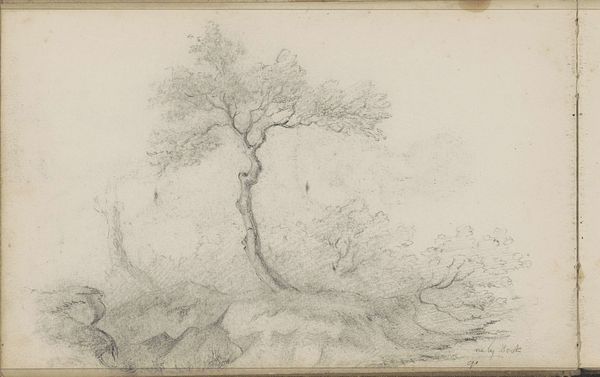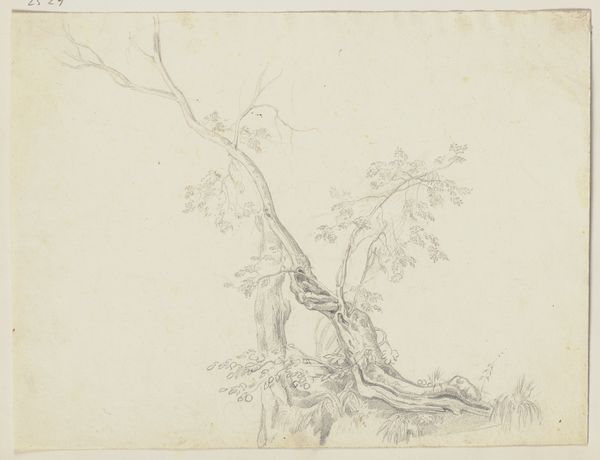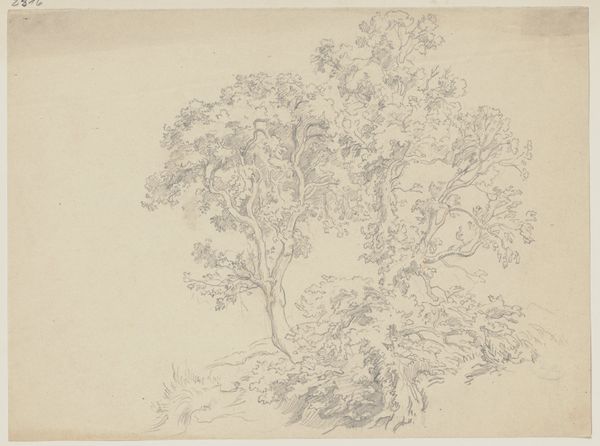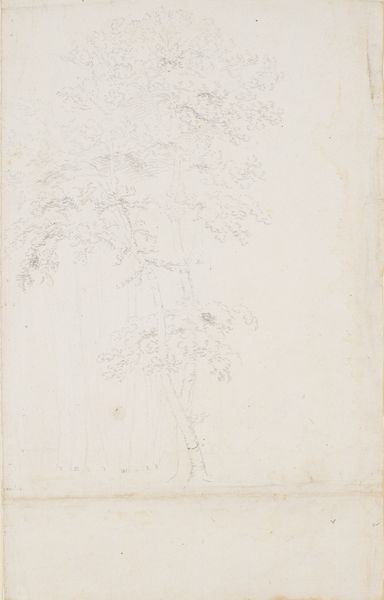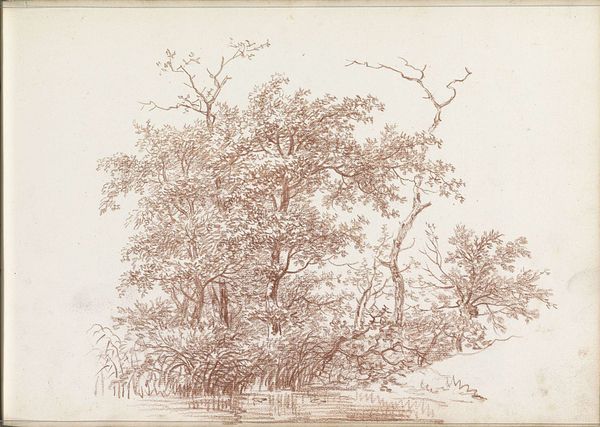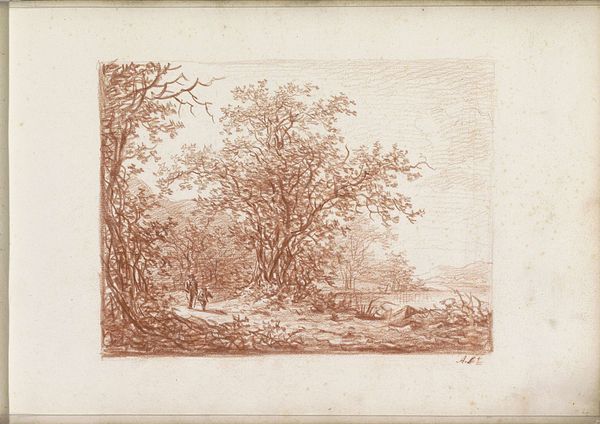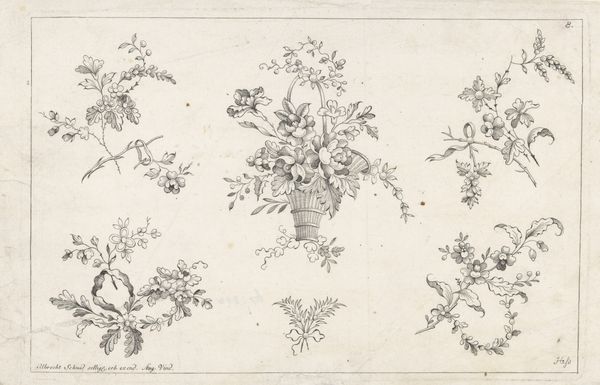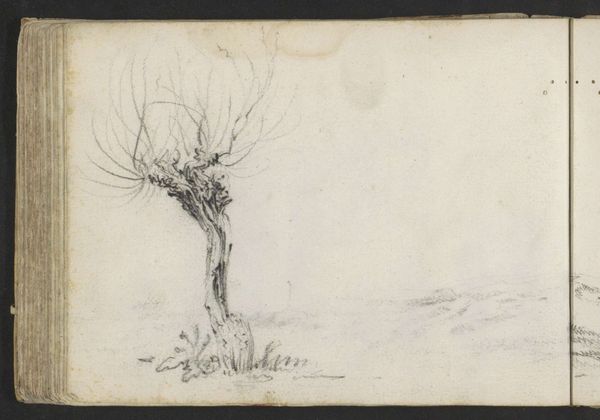
drawing, pencil
#
drawing
#
pencil sketch
#
landscape
#
mannerism
#
figuration
#
pencil
Dimensions: height 340 mm, width 233 mm
Copyright: Rijks Museum: Open Domain
Editor: This is "Study of a Group of Trees" by Agostino Carracci, a pencil drawing dating back to somewhere between 1567 and 1602. I find the red chalk and quick lines give the sketch a vibrant, almost restless energy. What do you see in this piece? Curator: The vibrancy you're picking up on is fascinating when we consider the historical context. This piece comes out of the late Renaissance, during a time of intense religious and political upheaval. The sketch might appear simple, but I'd argue that the artist’s choice to focus on the natural world, even in this quick study, represents a subtle resistance against the strict social and religious controls of the era. Do you think the choice of medium contributes to this? Editor: I can see that, definitely! A drawing feels so much more intimate, less formal than a large oil painting, and I hadn't considered it as a form of resistance. How would you interpret this within an intersectional framework? Curator: Through that lens, we can think about landscape as a space traditionally relegated to the feminine, outside the "masculine" sphere of history painting. Carracci’s focus could then be read as a conscious effort to give importance to the overlooked. Furthermore, considering the limited access to education for women artists at this time, these kinds of sketches became a backdoor through which they too engaged with artistic practice and nature itself. The seeming freedom of this drawing is underscored by an undercurrent of confinement in other avenues of life. What does this connection to limitations evoke for you? Editor: Wow, I never thought about a landscape study having such depth! It highlights how restrictions can push artists towards more personal and expressive forms. I think this will help me consider similar works in the future, seeing what's on the canvas AND what is behind it. Curator: Exactly! It reminds us to look beyond the surface and examine art as a product of specific social and political circumstances, particularly regarding gender, identity, and access. This makes it more resonant for a contemporary audience invested in intersectional approaches to art and history.
Comments
No comments
Be the first to comment and join the conversation on the ultimate creative platform.
